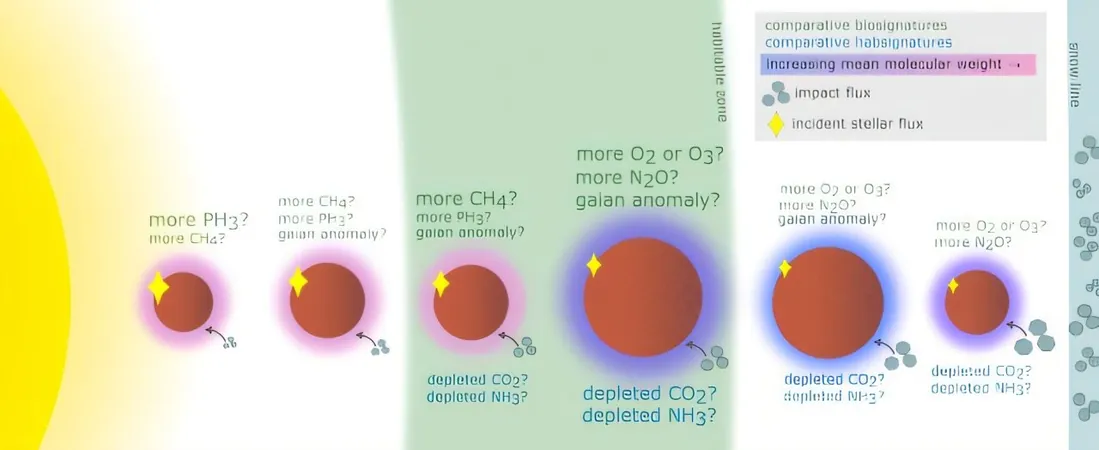
Discovering Life Beyond Earth: The Power of Comparing Exoplanets!
2025-05-12
Author: Liam
Astronomers believe that life may be more common in the universe than we think. While Earth is our sole example of a living world, the ingredients for life—like amino acids and sugars—seem to appear readily across the cosmos. The universe is filled with countless planets that could potentially support life, but confirming this remains a significant challenge.
Why is it so tough to prove the existence of extraterrestrial life? The answer lies in the fact that many signs we observe—known as biosignatures—can also arise from non-living processes. So, how can scientists confidently determine if life exists on other planets? One compelling method is to compare habitable worlds with others in the same system.
For instance, let’s consider our own solar system. If distant alien astronomers were to study Earth's atmosphere as it passes in front of the sun, they would detect oxygen, water vapor, and methane—key indicators of life. However, while these signals suggest life, they don’t provide definitive proof. If these extraterrestrials also examined the atmospheres of Mars and Venus, the stark differences would be illuminating.
While Earth has a rich atmosphere, Venus and Mars are characterized by dry, carbon dioxide-dominated atmospheres. Since planets in a solar system generally share similar chemical makeups, Earth’s unique atmosphere makes a strong case for life. Conversely, if Mars, Venus, and Earth all presented similar atmospheres, the argument for life on Earth would indeed weaken.
This concept is at the heart of a fascinating new study published on the arXiv preprint server. The researchers advocate for a broader approach: instead of focusing solely on individual planets, we should analyze the atmospheres of multiple planets within the same system. This method would highlight any potentially habitable planets and allow them to stand out among the barren worlds.
The study examined both our solar system and the intriguing Trappist-1 system, which harbors seven Earth-sized planets. The findings were striking for our solar system—Earth's atmosphere is so distinctive that it makes detecting life relatively straightforward.
However, the Trappist-1 system poses a different challenge due to its unique configuration. With all seven planets likely tidally locked to their red dwarf star, one might not easily spot an atmosphere indicative of life. The researchers suggest that by using the atmospheres of all seven planets, they can establish what’s called an abiotic baseline.
They focus on several detectable molecules like oxygen, methane, nitrous oxide, and phosphine. Each of these can be produced by both living and non-living processes, so their mere presence isn’t enough to confirm life. Yet, with a baseline framework established for the system, scientists could identify planets with an unusual concentration of these molecules—strongly suggesting the existence of life.









 Brasil (PT)
Brasil (PT)
 Canada (EN)
Canada (EN)
 Chile (ES)
Chile (ES)
 Česko (CS)
Česko (CS)
 대한민국 (KO)
대한민국 (KO)
 España (ES)
España (ES)
 France (FR)
France (FR)
 Hong Kong (EN)
Hong Kong (EN)
 Italia (IT)
Italia (IT)
 日本 (JA)
日本 (JA)
 Magyarország (HU)
Magyarország (HU)
 Norge (NO)
Norge (NO)
 Polska (PL)
Polska (PL)
 Schweiz (DE)
Schweiz (DE)
 Singapore (EN)
Singapore (EN)
 Sverige (SV)
Sverige (SV)
 Suomi (FI)
Suomi (FI)
 Türkiye (TR)
Türkiye (TR)
 الإمارات العربية المتحدة (AR)
الإمارات العربية المتحدة (AR)